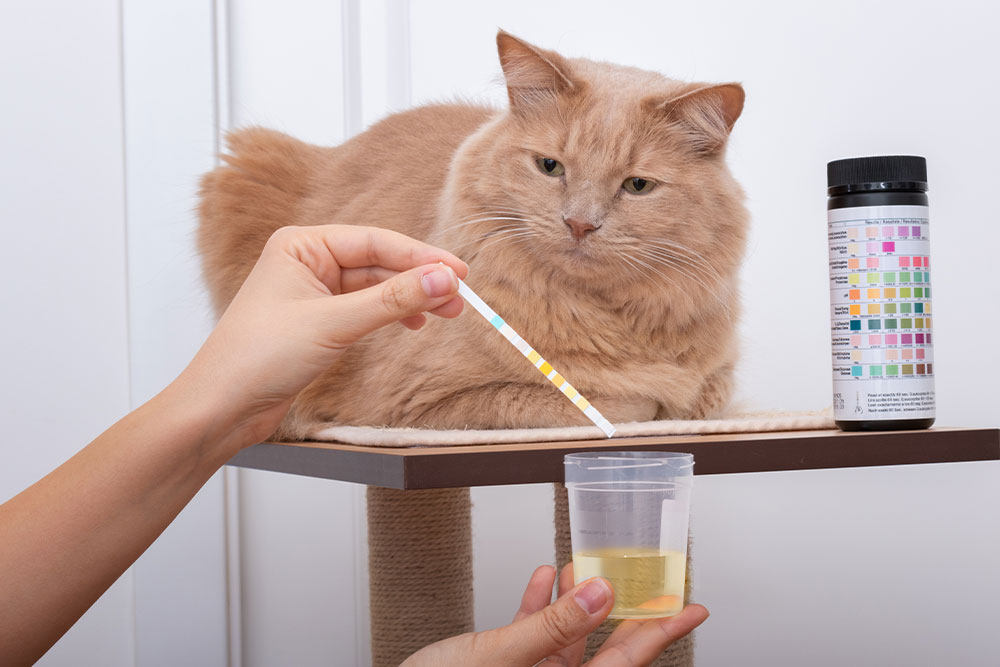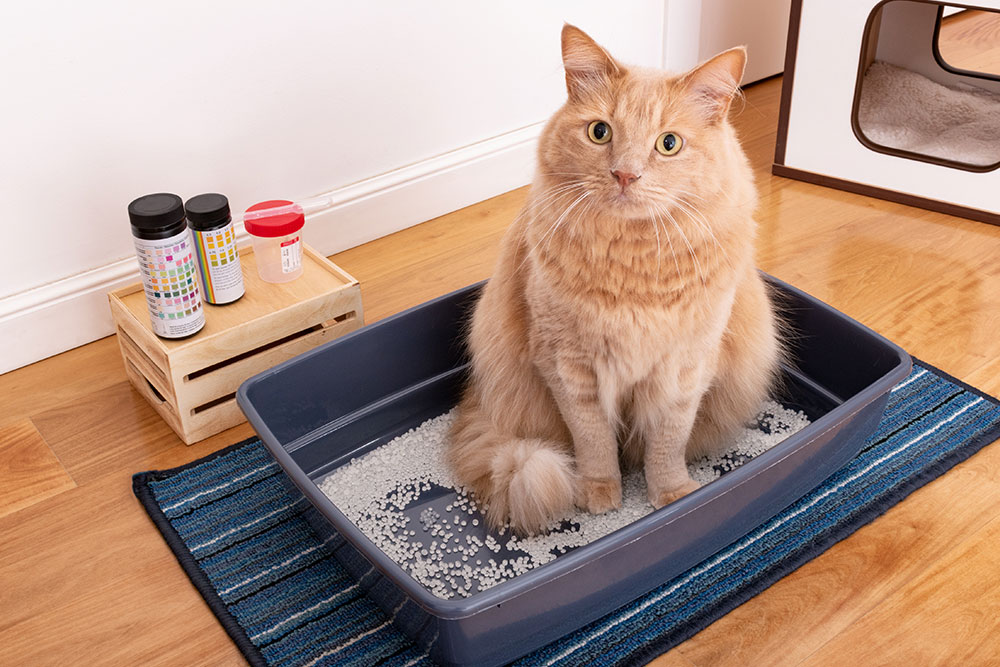Understanding Urinary Blockages in Cats – A Comprehensive Guide
What is a Urinary Blockage in Cats?
Urinary blockages in cats, or feline urethral obstruction, is a serious and potentially life-threatening condition that primarily affects male cats but can also occur in females. This condition arises when the urethra becomes obstructed with material such as crystals, urinary stones, or debris from the breakdown of bladder lining, preventing the cat from urinating.
This can lead to rapid kidney failure and other metabolic disturbances, such as hyperkalemia (high potassium levels), which can be fatal if not treated promptly. The pressure buildup in the bladder can also lead to bladder rupture, which is a critical emergency.
Recognizing the symptoms and understanding the causes of urinary blockages is crucial for preserving your cat’s health. For more insights into cat health, please visit our cat services.
Recognizing the Symptoms of Urinary Blockages in Your Cat
Identifying the signs of a urinary blockage early is key to preventing serious health complications. Common symptoms include:
- Straining to urinate, often producing little or no urine: This is one of the most obvious signs, and pet owners may notice their cat spending an unusual amount of time in the litter box without producing urine.
- Frequent visits to the litter box with minimal urine output: Cats may also begin to urinate in unusual places due to the discomfort they experience.
- Painful urination, which may be evident from your cat’s vocalizations or attempts to urinate outside the litter box: Cats might cry out when attempting to urinate, reflecting their pain.
- Lethargy or reluctance to eat: This can be a sign of systemic illness as toxins build up in the bloodstream due to the blockage.
- Noticeable discomfort or pain, exhibited by restlessness or hiding: Cats often hide when they are unwell, and increased irritability or aggression can also be a sign of distress.
Behavior changes such as increased irritability or depression can also indicate pain or discomfort associated with urinary issues. If your cat exhibits any of these symptoms, it should be considered an emergency. Immediate veterinary care is crucial and can be life-saving. For more details on what constitutes an emergency, visit our urgent care services page.
Key Causes of Urinary Blockages in Cats
Several factors can contribute to the development of urinary blockages:
- Crystals, Stones, and Urethral Plugs: These are the most common causes, often related to dietary factors or inadequate water intake. Struvite and calcium oxalate are the most common types of crystals found in cats.
- Diet and Hydration: Diets high in certain minerals, such as magnesium and phosphorus, can promote crystal and stone formation. Ensuring your cat drinks plenty of water is critical in preventing these issues.
- Breed, Age, and Gender Predispositions: Male cats, due to their narrower urethras, are at higher risk than females. Certain breeds, such as Persians and Himalayans, may also have genetic predispositions to urinary issues.
Understanding these causes can help in preventing occurrences. For a detailed scientific explanation, refer to ACVS’s insights on urinary obstruction in male cats.
First Aid and Immediate Actions for Suspected Urinary Blockage
If you suspect a urinary blockage, immediate action is critical:
- Do not attempt to treat or relieve the blockage at home: Home remedies or delays can worsen the condition.
- Keep your cat calm and comfortable while you prepare for immediate transport to a veterinary facility: Stress can exacerbate urinary problems, so remain calm and reassure your cat.
Delaying veterinary care can result in severe complications or death. If you notice any signs of distress or blockage, contact us immediately for guidance and to prepare for your arrival.
Diagnosis and Treatment Options at Peak Pet Urgent Care
Upon arrival at Peak Pet Urgent Care, we will conduct:
- A thorough physical examination: This includes palpation of the abdomen to assess bladder size and discomfort.
- Urinalysis and possibly blood tests: Blood tests help assess kidney function and check for electrolyte imbalances.
- Imaging studies like X-rays or an ultrasound to assess the bladder and urethra: These tools help identify stones or other obstructions.
Treatment may involve:
- Catheterization to relieve the blockage: This involves inserting a urinary catheter to allow urine to flow out of the bladder.
- Fluid therapy to correct dehydration and electrolyte imbalances: Intravenous fluids help restore normal kidney function and correct metabolic derangements.
- Surgery in severe cases to remove stones or correct anatomical abnormalities: For cats with recurrent blockages, a perineal urethrostomy might be considered.
Continuous monitoring and follow-up care are essential to prevent recurrence.
Preventing Urinary Blockages in Cats
Prevention is always better than cure, particularly with urinary blockages:

- Diet and Hydration: Ensure your cat has access to fresh water at all times and consider moisture-rich food options. A urinary tract health diet can reduce the risk of crystal and stone formation.
- Routine Vet Checks: Regular wellness exams can catch early signs of urinary tract issues. Discuss with your vet about checking urine pH and crystal content regularly.
- Environmental Enrichment: Reduce stress, which can contribute to urinary problems, by providing a stimulating environment. Interactive toys and scheduled playtime can be beneficial.
For more preventative tips and general advice, check our blog.
FAQs About Urinary Blockages in Cats
Q: How can I encourage my cat to drink more water?
A: Try using a cat water fountain, as many cats prefer running water. You can also add water to dry food or switch to wet food to increase moisture intake.
When to Visit Peak Pet Urgent Care
Identifying a urinary blockage as an emergency can save your cat’s life. If you suspect your cat is suffering from a blockage, do not hesitate to reach out. For contact information and operational hours, visit our contact page. Acting swiftly can make all the difference in these critical situations.






Leave A Comment